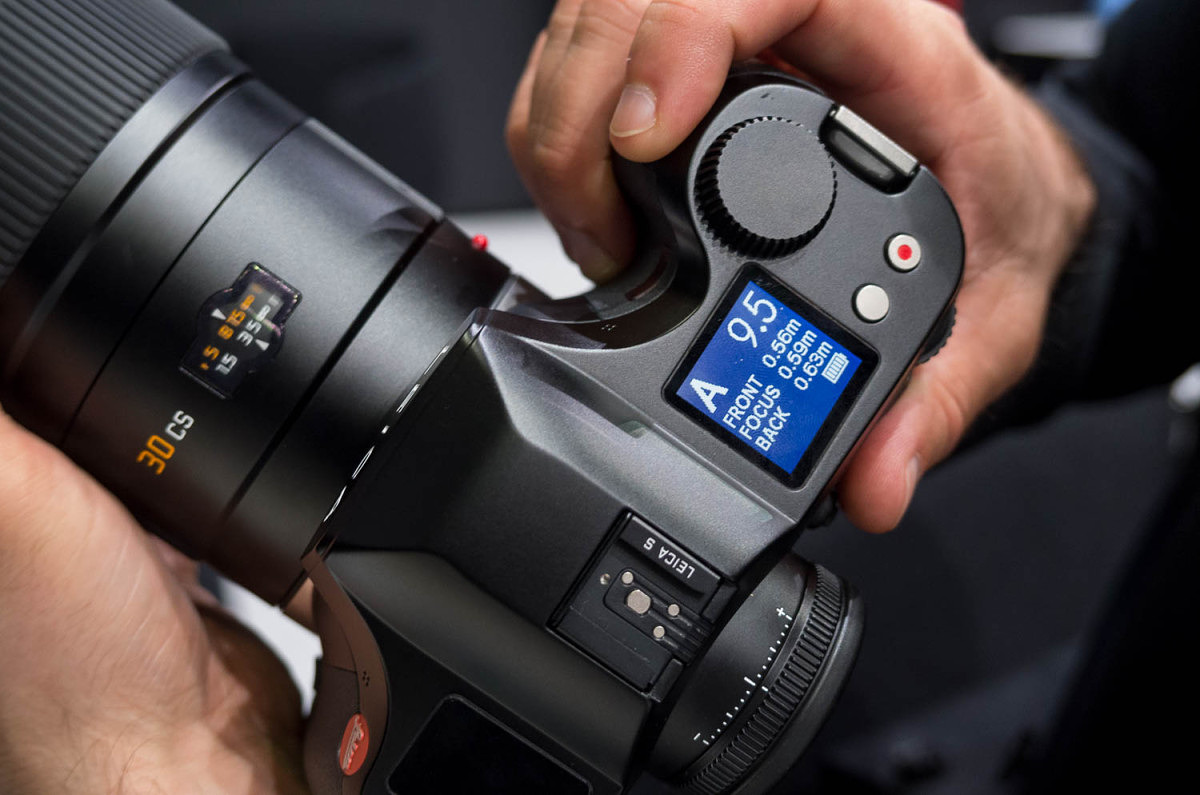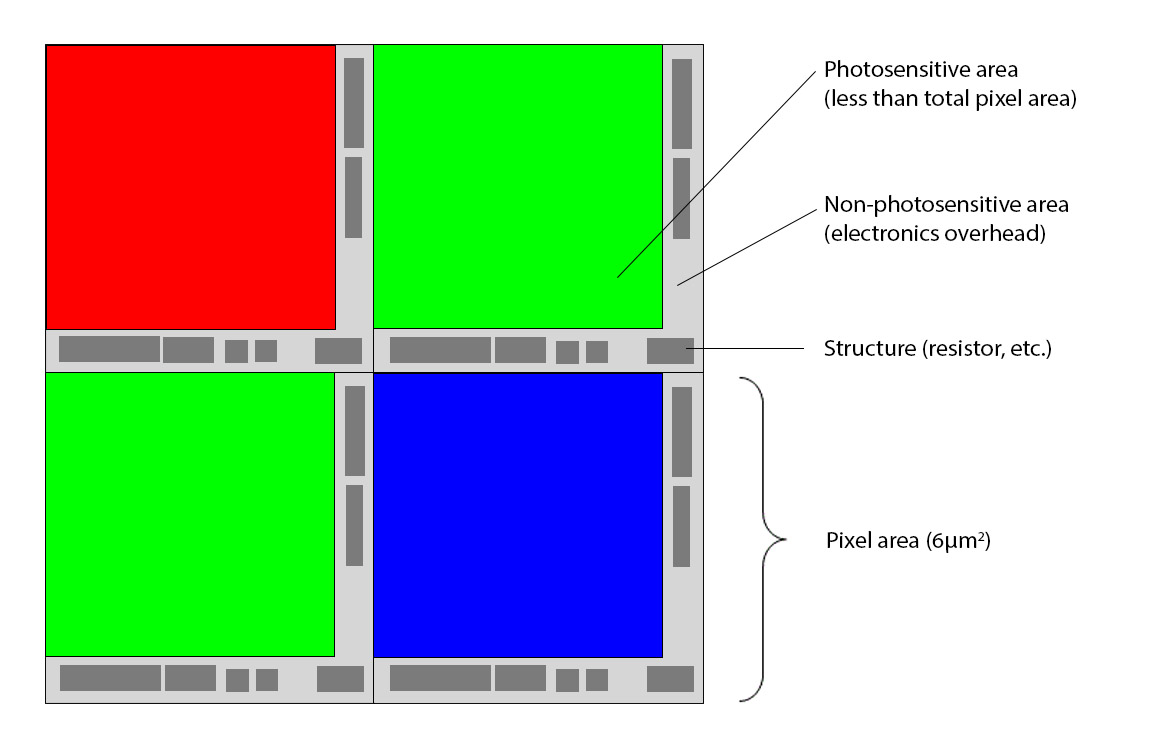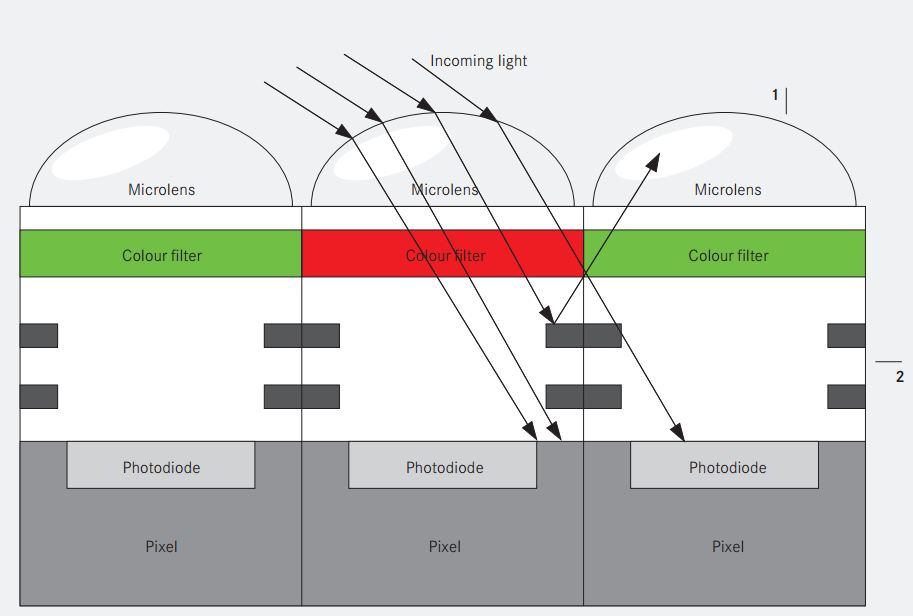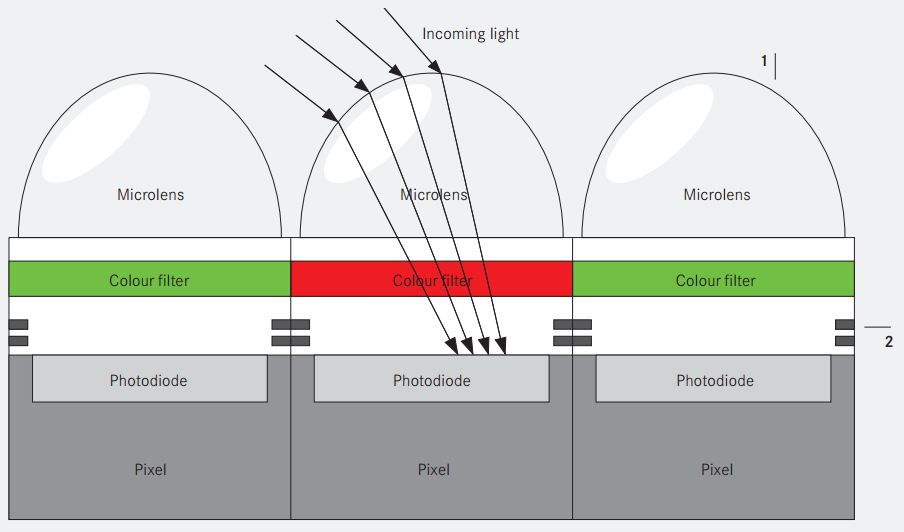-
Jack MacD posted a new activity comment 10 years, 4 months ago
In reply to: dalethorn replied to the topic Now comes the dilemma. to S or not to S? in the forum Leica S (Typ 006) I sent a request for a detailed comparison of the S typ 007 and the S-E (both new models I presume). Given the astounding price difference, there must be significant compromises with the S-E, and I'd like to see the complete list. ViewThe S-E has a one year warrantee vs three for the type 007
The S-E is really the same as the former type 006 introduced two years ago
The S-E is CCD sensor, the type 007 is CMOS so it has live view and higher ISO.
The 007 can take 4K video, etc. etc. -
Jack MacD replied to the topic Now comes the dilemma. to S or not to S? in the forum Leica S (Typ 006) 10 years, 4 months ago
Marc,
I followed your lead and just got the S 006 from Josh at Leica Miami.
The three year platinum like warranty was the clincher, vs one year with the S-E
But so was the price now that the 007 has been announced and kept 006 prices down.Not sure that there are many left to be had in the US at this point.
The 006 is all around crisper to…[Read more]
-
Jack MacD commented on the post, Why Leica is staying at 37.5MP for the S (Typ 007) 10 years, 5 months ago
In reply to: David Farkas wrote a new post, Why Leica is staying at 37.5MP for the S (Typ 007) Since Photokina, I’ve read some comments online expressing disappointment in Leica’s decision to use the same 37.5MP resolution of the current S (Typ 006) in the upcoming S (Typ 007). I’m not surprised. Indeed, as a long time S-System user myself, I can’t say that my initial reaction wasn’t similar. I too wondered why there was no resolution bump. But, unlike the average S-System user, I have a certain advantage and a somewhat unique perspective that most don’t. I’ve had a few hours of one-on-one time during Photokina with key individuals at Leica responsible for developing the product. And believe me, I am grateful for the continuing opportunities that my close relationship with Leica has allowed for over the years. Besides speaking with the head of professional imaging Stephan Schulz and S 007 product manager Toni Felsner at some length in Cologne, I also had a very informative chat with Dr. Volker Zimmer, the head of R&D at Leica. In each of my conversations, I pretty much led off with, “So, why only 37.5?” And, to the casual observer, the reactions and responses to such a direct question that I received might be surprising. Instead of the defensiveness that one might expect, I was greeted with knowing smiles and articulate reasons surrounding the decision. Before even delving into Leica’s strategy, we, as users, have to really ask if this resolution is holding us back. Some might say, “Yes, absolutely. More is always better.” And perhaps others would reason, “No, the resolution is fine, but I’d really like live view and higher ISO.” As for myself, I’ve been shooting with the S2 and then S 006 since before the S2 was even in production. I have made eye-poppingly good 30x40 inch prints myself and have seen beautiful fine art prints 5 x 7 feet printed from single S2 files hanging in our gallery at Leica Store Miami from photographer EJ Camp.
Stephan’s take on the matter was that he doesn’t think that users’ real issue is about actually needing more pixels. The difference between 40 and 50 MP is roughly a 10-15% increase in linear resolution, hardly earth shattering. He feels strongly that for there to be a noticeable increase in image quality, the jump would have to be more significant, say from 40 to 60 or possibly even to 70 MP. He believes the underlying concern is that users of a system want to feel theirs is the most advanced, the most future-proof. By staying at 37.5 MP while the competition is all going to 50 MP, Stephan thinks that the concern of some Leica S users is that somehow their camera is outclassed, or worse, outdated. I thought for a moment about this then ran a quick list of features in my head, innovations and advantages of the S 007 vs. the competition.
I thought in general about all S camera bodies, including the current S 006:
Before even delving into Leica’s strategy, we, as users, have to really ask if this resolution is holding us back. Some might say, “Yes, absolutely. More is always better.” And perhaps others would reason, “No, the resolution is fine, but I’d really like live view and higher ISO.” As for myself, I’ve been shooting with the S2 and then S 006 since before the S2 was even in production. I have made eye-poppingly good 30x40 inch prints myself and have seen beautiful fine art prints 5 x 7 feet printed from single S2 files hanging in our gallery at Leica Store Miami from photographer EJ Camp.
Stephan’s take on the matter was that he doesn’t think that users’ real issue is about actually needing more pixels. The difference between 40 and 50 MP is roughly a 10-15% increase in linear resolution, hardly earth shattering. He feels strongly that for there to be a noticeable increase in image quality, the jump would have to be more significant, say from 40 to 60 or possibly even to 70 MP. He believes the underlying concern is that users of a system want to feel theirs is the most advanced, the most future-proof. By staying at 37.5 MP while the competition is all going to 50 MP, Stephan thinks that the concern of some Leica S users is that somehow their camera is outclassed, or worse, outdated. I thought for a moment about this then ran a quick list of features in my head, innovations and advantages of the S 007 vs. the competition.
I thought in general about all S camera bodies, including the current S 006:
- Smallest, lightest, most ergonomic body
- Completely weather and dust sealed on body and lenses
- Brightest, most color neutral viewfinder
- Virtual horizon display in viewfinder
- Dual shutter system (even with Hasselblad HC/HCD lenses)
- Least mirror vibration
- Best lenses (no one seems to argue this one)
- Longest battery life with shot counts measured in thousands
- Optional grip to double battery life
- Fastest AF system (with latest firmware)
- Best focus tracking for moving subjects (with latest firmware)
- Only system with built-in GPS for geotagging and auto time/date/time zone setting
- Most integrated system with such features as aperture shift compensation in AF
- Only system designed 100% from the ground-up as a complete digital imaging chain
- Ability to use Hasselblad HC/HCD lenses with full AF, aperture and shutter control via adapter
- Ability to use Contax lenses with full AF and aperture control via adapter
- Manual adapters for Mamiya 645, Hasselblad V and Pentax 67
- Fastest frame rate / fastest sustained frame rate (3.5 fps)
- Fastest shot-to-shot time
- What promises to be best high ISO performance in MFD
- Most advanced sensor design (I’ll get to this one in a minute)
- Magnified live view anywhere in image
- Focus peaking on screen
- Only system with live view contrast detect AF anywhere in the image
- Only system with spot metering anywhere in image during live view
- 60 fps refresh rate on live view for seamless output
- Full Wi-Fi control from iPad with 60 fps streaming live view, capture and image review
- Backup mode for dual card recording and recording to card while tethered
- Live readout for DOF range
- Only MFD system with 4K video
- Only MFD system with built-in timecode generator and ability to receive external timecode via adapter
- Full sensor width HD recording
- Clean FullHD HDMI out with simultaneous recording to card
- 4:2:2 video encoding
Dr. Zimmer estimates that the sensor in the S will have a SNR of around 79 dB, which will probably translate into somewhere between 13 and 14 stops of usable DR. The second goal was to achieve the thinnest CMOS sensor ever developed so that the pixel wells were as shallow as they could be. There are multiple layers to a sensor and by making each one of these slimmer the cumulative result is significant. Why is this important? Well, when light enters a shallower pixel well it is less likely to bounce off the edges on the way down to the photodiode. Some of the technology that went into the sensor came from CMOSIS’s experience in making 1.75 micron mobile phone camera chips and using extremely fine structures to maximize the already small photosensitive areas on those tiny sensors. One such tactic was utilizing copper to construct the conductive pathways (wires) in the sensor. Most often, aluminum is the chosen material, as the process for using copper is more complex. But, because copper has a much lower electrical resistance, conducting layers with half the thickness could be used. And to minimize thickness, instead of having four metal layers for the conductors typically employed on CMOS sensors, only two were necessary on the MAX CMOS chip. Leica also designed an optical microlens structure unlike any used previously. Leave it to an optics-driven company to rethink the classic flat-raindrop structure used for so many years. The Leica design is more of an elongated cone. Light entering perpendicularly passes straight through, and light coming in at a high angle of incidence gets caught by the taller lens and directs it down. The result is that there is no sensor vignetting, no color shifts and no loss of sharpness in the corners. It’s easy to put this theory to the test. Take a Leica 18mm Super Elmar-M ASPH lens. Put it on the M 240 and take a shot. Then, mount the same lens on a Sony A7r. Yeah…. Oh and just to see that the advantage isn’t only at extremes, try a 35mm Summilux ASPH next. The Sony sensor in the A7r just isn’t adept at handling non-retrofocus lenses, with non-telecentric designs. The result of all these efforts is that the S 007 should prove to be the most advanced and capable medium format digital system on the market. Cutting edge, from optics to camera body to sensor architecture, the S will be far from outdated. So, what about those needing more pixels? Here’s the math: going from 40 to 50 MP would only yield an additional 2.6 linear inches of print resolution at 300 DPI. That’s it. So, as a photographer, I ask myself whether I’d rather have that long list of advantages and features that can expand my photographic possibilities, or whether I want to print two inches wider. I think the answer is clear, at least for me, and I do hope that others can look beyond mere megapixels to see what the S 007 will have to offer. View
Diagram of the surface of a sensor. If structures can be made smaller, the non-photosensitive areas can be minimized to allow for more surface area dedicated to light gathering.
I appreciate the info on the sensor architecture. Impressive data.
I was one of those who wanted more resolution, but I knew that a meaningful improvement would have been 80meg not 50. But that was for bragging rights vs the competition.
My limitation on printing size is not the resolution of the sensor, my limitation is the width of large…[Read more]
-
Jack MacD replied to the topic New Firmware – what to expect on the S2? in the forum S2 10 years, 5 months ago
This little video of a 120mm lens focusing before and after the update suggest there is one less step of searching now.
The sound tells the story a bit clearer than the embarrassingly fuzzy image. -
fotografz and
 Jack MacD are now friends 10 years, 5 months ago
Jack MacD are now friends 10 years, 5 months ago -
Jack MacD started the topic Looking Out A Cave Entrance in the forum Images to Share 10 years, 5 months ago
Plato would have taken this picture if he had an S
Zoom lens, wide to 30mm.
-
Jack MacD replied to the topic Who plans on using 4K video? in the forum Leica S (Typ 007) 10 years, 6 months ago
I have a director/cine friend who has been encouraging me to always shoot video on my still landscape shots, just to provide it to video stock agencies. Haven't bothered in the past, but might with 4K on the 007. I like 4K over HD as it is a bit of future proofing. As a presentation format, I need to be inspired by seeing someone else's…[Read more]
-
Jack MacD replied to the topic Autumn Lake in B&W in the forum Images to Share 10 years, 6 months ago
David,
Thanks for your advice.
There is no planned triptych here, as the images will be on individual pages in a book.
But you are right, if there was one, I would find a way.
The naming of the images occurs because I am uploading the files to my website first.
Then I do a screen save from that website, and the website gives them the strange…[Read more] -
Jack MacD started the topic Trees Looking UP triptych in the forum Images to Share 10 years, 6 months ago
Using S files, a triptych at full size could be 10 feet by 5 feet for a total wall covering.
-
Jack MacD started the topic Autumn Lake in B&W in the forum Images to Share 10 years, 6 months ago
I am working on a project for a B&W book focusing on shoreline. I have 23 images so far, here are four.
Yes Kipper, is you line up three of these four, you could have a triptych.
Which do you recommend?This is the project that led me to try a T vs S test that is discussed separately.
-
Jack MacD replied to the topic S test in B&W in the forum Images to Share 10 years, 6 months ago
And the full S
Forgive me, as the ability to upload more than one image is an issue for me.
-
Jack MacD replied to the topic S test in B&W in the forum Images to Share 10 years, 6 months ago
vs the T crop
-
Jack MacD replied to the topic S test in B&W in the forum Images to Share 10 years, 6 months ago
Here is the S and the crop
-
Jack MacD started the topic S test in B&W in the forum Images to Share 10 years, 6 months ago
I have been shooting a series with the S in B&W on a lake. I might upload a few examples eventually.
Fellow Leica photographer Gary has been showing me some excellent work with his T, so I decided to do a bit of a test with the two cameras.
I shot a scene with the T and then tried to duplicate it with the S.
This is a real world test where I am…[Read more] -
Jack MacD replied to the topic T for test in B&W in the forum Images to Share 10 years, 6 months ago
Since I am not sure that the new forum allows full resolution inspection, here is a crop
-
Jack MacD started the topic T for test in B&W in the forum Images to Share 10 years, 6 months ago
This is a test shot in B&W with the T, I shot it to compare it with an S shot at the same time.
ISO 400 F11 1/400 Orange filter in Post. -
Jack MacD replied to the topic How is everyone liking the new site design? in the forum Annoucements and Site Matters 10 years, 6 months ago
David,
I have now lived with your new format awhile.
1. I think your features of NEws Reviews and Field Tests are handled much better than before.
If I send someone to the RedDot it appears as a better sourced of Leica info than anywhere else.
Congratulations.2. The Forum just takes getting used to it.
Given that over the last three years, you…[Read more]
-
Jack MacD replied to the topic New S (007) in the forum Leica S 10 years, 6 months ago
To answer one of my question, I now see the 4K video is sized just about super 35. So the lens factor is 2. A 120 will look as 240mm or 200 in 35mm equivalents. A 24 will not be 19mm but 38mm in 35mm equivalents. Some are already suggesting that a special wide angle will be useful.
-
Jack MacD replied to the topic New S (007) in the forum Leica S 10 years, 6 months ago
Josh,
A good reply.
Yes I wanted higher resolution, but given that I have already sold enlargements up to 7.5 feet by 5 feet with a S2, the desire for more pixels is a desire not a requirement. Turns out that 45″x30″ is the normal upper limit of an enlargement, not because of resolution, but because any larger is a challenge to physically have a…[Read more] -
Kirsten Vignes and
 Jack MacD are now friends 10 years, 6 months ago
Jack MacD are now friends 10 years, 6 months ago - Load More




Glad the S 006 is working out for you, Jack. While the S2 is certainly a workhorse, the added features and hardware upgrades of the S 006 certainly make the experience a little smoother.